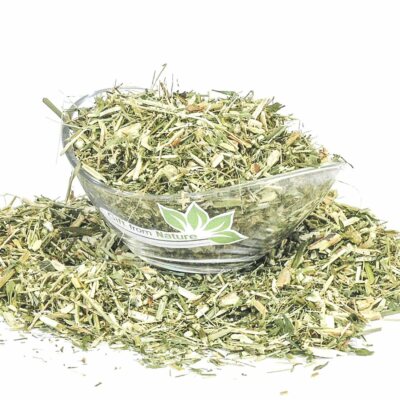Is Goats Rue a Diabetes Game Changer or Just Hype?
- admin
- September 22, 2024
- 4:56 pm
- No Comments

In the world of herbal medicine, Goats Rue is gaining traction as a potential game-changer for diabetes management.
But can this plant truly help control blood sugar levels, or is it just another fleeting health trend?
To provide a comprehensive answer, let’s dive into the history, scientific evidence, and practical applications of Goat’s Rue in diabetes treatment.
Points Covered in this Article:
- What is Goat’s Rue?
- The Origins and Traditional Uses of Goat’s Rue
- Mechanisms of Action: How Goat’s Rue Affects Blood Sugar
- Scientific Evidence: What the Research Says
- Forms and Consumption: Tea, Tinctures, and Capsules
- Benefits Beyond Diabetes: Other Potential Health Effects
- Potential Risks and Side Effects
- Practical Tips: How to Use Goat’s Rue Safely
- Conclusion: Is It a Game-Changer or Just Hype?
What is Goat’s Rue?
Goat’s Rue (Galega officinalis) might sound like a plant best left to folklore, but this herb has earned serious street cred in both ancient remedies and modern metabolic research.
Traditionally used for digestive troubles and boosting lactation, it is now being hailed as the green godmother of diabetes medication.
And yes—your metformin tablet to lower blood sugar may owe its origin story to this humble weed.
Here is a closer look at what makes Goat’s Rue a botanical powerhouse:
The Chemical Trailblazer:
Goat’s Rue contains galegine, a guanidine compound historically shown to lower blood sugar. Though too toxic for direct use, it laid the biochemical groundwork for the development of metformin, the world’s most widely prescribed anti-diabetic drug.
Animal Studies Show Promise:
When tested on diabetic rodents, goat’s rue extracts reduced fasting blood sugar and improved glucose tolerance. The effect, in some cases, was nearly on par with pharmaceutical drugs, though human studies are still lacking.
Loaded with Flavonoids:
It’s not just about galegine—Goat’s Rue is rich in antioxidants like quercetin, kaempferol, and rutin. These compounds are known for improving insulin sensitivity and reducing inflammation.
Micronutrient Bonus:
The plant also provides trace elements like selenium, copper, and manganese and traces of chromium to lower blood sugar levels—minerals that help optimize insulin signaling and glucose metabolism.
Handle with Care:
Despite its benefits, goat’s rue isn’t entirely benign. In high doses, it may cause liver or kidney toxicity(common in Alstrom Syndrome ) and could interact with medications such as insulin or blood thinners. Supervision by a qualified healthcare provider is strongly recommended.
In short, Goat’s Rue is a fascinating plant with real potential—but it walks the fine line between herb and drug. Caution, context, and good science are key.
The Origins and Traditional Uses of Goat’s Rue
Historically, Goat’s Rue was used as a natural remedy in Europe, particularly in France and Italy. The plant was often used to treat fever, digestive issues, and as a galactagogue to stimulate milk production in breastfeeding women.
The discovery of its potential role in diabetes management came much later when researchers noticed its effects on blood sugar levels.
In traditional medicine, the goat’s rue herb was considered a multipurpose remedy. However, its use in modern diabetes treatment is still under investigation.
It is essential to differentiate between traditional uses and evidence-based applications, as not all traditional claims hold up to scientific scrutiny.
Mechanisms of Action: How Goat’s Rue Affects Blood Sugar
The primary active compound in Goat’s Rue is guanidine, which has hypoglycemic effects. This compound served as a precursor to metformin, a well-known diabetes drug.
Research suggests that Goat’s Rue may lower blood sugar by enhancing insulin sensitivity and inhibiting the absorption of glucose in the intestines.
Goat’s rue benefits for blood sugar regulation may also include stimulating the production of beta cells in the pancreas, although this effect is less documented.
The herb’s ability to lower fasting glucose levels makes it an intriguing option for those with type 2 diabetes, but it is not without limitations.
Scientific Evidence: What the Research Says?
While there is some promising data on the use of Goat’s Rue for diabetes, the scientific community remains cautious.
Studies have shown that goat’s rue benefits blood sugar levels, particularly in animal models. However, clinical trials in humans are limited, and results are often inconclusive.
A review by the National Center for Complementary and Integrative Health (NCCIH) highlights that while herbs like Goat’s Rue may offer some benefits, they should not replace conventional treatment options such as insulin or oral hypoglycemics.
The lack of large-scale, high-quality studies makes it difficult to recommend Goat’s Rue as a primary treatment for diabetes.
Another review by the American Diabetes Association suggests that while natural supplements like Goat’s Rue show promise, they should be used with caution and under medical supervision.
The herb may interact with other medications and could potentially cause hypoglycemia if not monitored properly.

Forms and Consumption: Tea, Tinctures, and Capsules
Goat’s Rue is available in various forms, each with its own set of pros and cons. The most common forms include:
- Goat’s Rue Tea: This is a popular choice for those who prefer a natural approach. Goat’s rue tea benefits include easy preparation and consumption. However, the concentration of active compounds may vary, making dosage difficult to control.
- Goat’s Rue Tincture: Tinctures offer a more concentrated form of the herb. They are absorbed quickly but can be potent, so it’s essential to follow dosage recommendations closely.
- Capsules and Powders: These forms provide a standardized dose and are convenient for daily use. However, it’s crucial to choose high-quality, organic goats rue supplements to avoid contaminants.
Regardless of the form, it is essential to consult with a healthcare provider before incorporating
Goat’s Rue into your routine, especially if you are already taking diabetes medications.
Benefits Beyond Diabetes: Other Potential Health Effects
While the primary focus is on its role in diabetes management, Goat’s Rue may offer additional health benefits.
Studies suggest that it has mild diuretic and antioxidant properties. Goat’s rue herb benefits also include supporting lactation, which is why it is commonly included in herbal blends for nursing mothers.
However, these benefits should be considered supplementary and not a primary reason for using the herb. So, you might want to include tried and tested blood sugar support supplement into your diet.
The evidence supporting these claims is less robust than the research on its hypoglycemic effects.
Potential Risks and Side Effects
As with any supplement, there are potential risks associated with Goat’s Rue. Overconsumption can lead to gastrointestinal issues such as nausea, diarrhea, and stomach cramps.
Additionally, because Goat’s Rue can lower blood sugar levels, it poses a risk of hypoglycemia, especially when taken alongside other diabetes medications.
Pregnant and breastfeeding women should exercise caution, as the effects of Goat’s Rue on fetal development and milk production are not fully understood.
Those with liver or kidney conditions should also avoid the herb due to potential toxicity risks.
Practical Tips: How to Use Goat’s Rue Safely?
If you decide to try Goat’s Rue, here are some practical tips to ensure safe usage:
- Consult a Healthcare Provider: Always speak to a doctor or interact with diabetes support groups before adding Goat’s Rue to your regimen, especially if you are on medication for diabetes or other conditions.
- Start with a Low Dose: Begin with a small dose to see how your body reacts. Monitor your blood sugar levels closely to avoid hypoglycemia.
- Choose High-Quality Products: Opt for organic goats rue products to minimize exposure to pesticides and contaminants. Look for reputable brands that offer third-party testing.
- Monitor for Side Effects: Keep an eye out for any adverse reactions, such as stomach upset or changes in blood sugar levels. Discontinue use if you experience any negative side effects.
- Avoid Long-Term Use Without Supervision: Long-term use of any supplement should be done under the guidance of a healthcare provider to avoid potential risks.
Is It a Game-Changer or Just Hype?
So, is Goat’s Rue a diabetes game-changer or just hype?
The answer lies somewhere in between. While it shows promise as a supplementary treatment for managing blood sugar levels, it should not replace conventional therapies.
The evidence supporting its use is still in its early stages, and more research is needed to confirm its efficacy and safety.
For those looking to explore natural supplements, Goat’s Rue can be a valuable addition to a comprehensive diabetes management plan, provided it is used responsibly and under medical supervision.
But for now, it is more of an intriguing option than a definitive game-changer.
References: